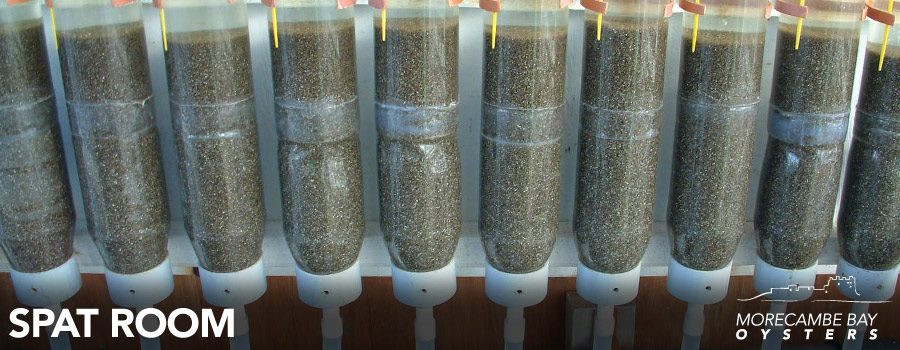
The spat leave the hatchery/micro nursery at around sieved 0.8mm, we then need to grow them to approximately sieved 3mm (4-5mm in length) which is big enough to survive outside in the nursery tanks during winter.
To do this we operate 3 separate indoor heated units, each unit has a slightly lower temperature than the last and gradually acclimatises the seed to match the temperature outside, this eliminates any shock and allows the enzymes in the gut of the oyster to break down food at lower temperatures.
Water is heated and pumped through the oysters and then the heat is recovered using titanium-plate heat exchangers.
The combined flow of these units is 35m3/hr and they have a seed capacity of 100kg with food added from various large ponds, plus any excess food from the 2 algae units.
Added to this is the algae from 2 small 1000m3 ponds which are enclosed and used like blooming tanks, we pump out the water from these ponds and let them refill through the ground, the water being naturally sand filtered in the process.
We add nutrients and a “spike” of algae from one of the continuous flow algae units, one pond is being used while the other is left to bloom.
The flow from one of these ponds would be approximately 10m3/hr and the cell density would usually be around 200,000-500,000 cells/ml.
